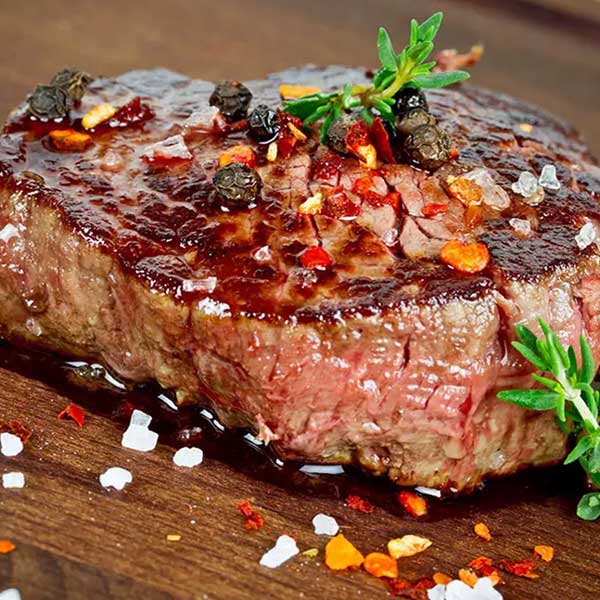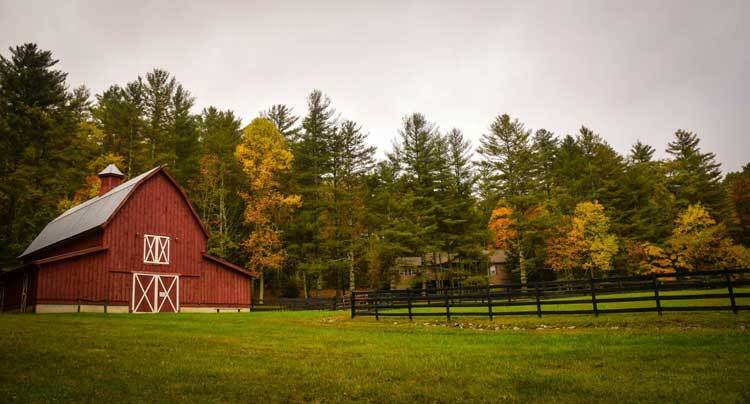The patties sizzle on the grill, filling the backyard with the unmistakable aroma of chicken on a summer evening. Your mouth waters as you anticipate the juicy, tender meat inside that golden crust. But have you ever wondered about the source of that chicken on your plate?
Behind the scenes, family-run chicken farms across Ontario work hard to raise healthy birds that become the chicken we know and love. These farmers wake before dawn to care for chicks and hens, ensure safe and humane conditions, and operate their businesses with care and integrity. For many, chicken farming is a multi-generational tradition passed down through the years.
With over 600 chicken farms in Ontario producing over 90 million chickens per year, the province’s chicken farming industry contributes significantly to local economies and provides fresh, high-quality chicken to consumers across Canada. In fact, Ontario produces nearly 40% of all chicken raised in Canada!
From specialty breeds to free-range environments, Ontario’s chicken farms reflect the conscientious, compassionate nature of the province itself. Join us as we journey inside the world of tender delights raised on Ontario’s family-run chicken farms! You may never look at chicken the same way again.
History of Chicken Farming in Ontario
Chicken farming has been an important part of Ontario’s agricultural industry for over a century. While chickens were initially raised on small family farms for local consumption, commercial chicken production began in the early 1900s to meet the demand from rapidly growing urban populations.
The first large commercial chicken farms were established in Ontario in the 1920s and 1930s. These farms housed flocks of several thousand birds and used incubators and brooders to raise chicks. Advances in breeding, nutrition, housing, and disease control allowed chicken farming to scale up and become more efficient.
By the 1950s, vertical integration transformed the poultry industry, with large companies controlling every stage from breeder flocks to processing plants. The introduction of broiler chickens – breeds optimized for meat production – accelerated growth. Small family-run operations declined while large barns housing tens of thousands of birds became standard.
Today, Ontario is Canada’s leading chicken producer, with over 1,000 broiler chicken farmers raising around 150 million chickens per year. While the industry now relies on modern technology and large-scale operations, some independent family-run farms continue the century-old tradition of raising chickens in Ontario.
Free-Range vs Cage-Free: Understanding the Labels
When choosing chicken at the grocery store or restaurant, you may notice labels like “free-range” and “cage-free.” These labels have specific meanings when it comes to how the chickens are raised.
Free-Range Chicken
Free-range chicken must have access to the outdoors for at least part of the day. The outdoor area may be fenced and have vegetation. Free-range conditions allow chickens to engage in natural behaviours like roaming, scratching, and foraging. While requirements vary, free-range chickens typically have more space per bird than cage-free chickens.
Cage-Free Chicken
Cage-free chickens are raised indoors in a barn or poultry house. They are not kept in small, individual cages. Cage-free conditions allow chickens more space to walk around and spread their wings compared to conventional cages. However, cage-free chickens generally do not have outdoor access. The indoor space may be crowded as cage-free does not indicate a maximum density.
Free-range chickens must have at least some access to the outdoors, while cage-free chickens are raised without cages indoors. Looking for these specific labels can help consumers understand how their chicken was raised.
Life on a Chicken Farm
Life on a family-run chicken farm in Ontario is busy but rewarding. The farmers wake up early, well before sunrise, to start their day. The first order of business is caring for the chickens. The farmers walk through the barns, making sure the chickens have plenty of feed and fresh water. They keep a close eye out for any chickens that seem ill or injured, so they can provide medical care if needed.
The chickens at free-range farms get let outside first thing in the morning. They enthusiastically run out to explore the pasture, foraging, dust bathing, and sunning themselves. The farmers make sure the mobile coops, providing shade and shelter, are moved to fresh grass.
Cage-free chickens don’t go outside, but they live in spacious barns with room to move around and spread their wings. The farmers keep the barns clean and ventilated. Special lighting simulates daylight cycles. Enrichments like perches and pecking toys engage the chickens’ natural behaviours.
There is always maintenance work to be done – fixing fencing, maintaining equipment, cleaning the barns. The farmers also spend time observing the chickens. Noticing small changes in behaviour or appearance can alert them to potential issues.
It’s not just the chickens that need care. Baby chicks arrive regularly and need extra attention. The farmers work hard to give them the best start in life. They also put a lot of care into breeding healthy, high-quality chickens.
It’s an early day to bed for the farmers, to be ready for the next busy day. But they take pride in what they do, providing good lives for their chickens and supplying fresh, local chicken to their community. It’s a very hands-on, authentic way of life.
From Farm to Table
Raising chickens for meat involves several key steps from the farm to the grocery store. It all starts with the chicks being hatched and arriving at the farm within their first day of life. The young chicks live in a brooder house for 4-6 weeks where they have access to feed, water, heat lamps, and ample space to move around. Once they develop feathers and can regulate their body temperature, they are moved to a chicken house with large open areas for roaming.
Chickens raised for meat reach market weight between 4-6 weeks old. At this point, they are transported from the farm to a processing facility. Here the chickens are humanely harvested and prepared for retail sale. The processing involves removing feathers, organs, head and feet. After passing inspection, the chickens are packaged into sealed containers and air chilled.
Chicken Breeds Raised in Ontario
Ontario chicken farmers raise a variety of chicken breeds that are well-suited for our climate and meet consumer preferences. Some of the most common chicken breeds raised in the province include:
Cornish
The Cornish chicken is a breed that originated in Cornwall, England. It is a meaty bird with a broad, plump body and is one of the most popular breeds raised commercially for meat. The Cornish Cross is a hybrid cross between a Cornish rooster and a Plymouth Rock hen that matures very quickly and is ready for processing in just 5-6 weeks.
Plymouth Rock
The Plymouth Rock is an American breed that originated in Massachusetts in the 19th century. This dual-purpose chicken has a medium-large body size and is valued both for its meat and egg production. There are several colour varieties including barred, white and buff. It is hardy and thrives in cold winters.
Ross
The Ross is a commercial fast-growing broiler chicken bred specifically by Aviagen for meat production. It reaches market weight at 6-7 weeks and is known for an efficient feed to meat conversion ratio. The Ross breed accounts for much of the chicken meat consumed in Ontario.
Leghorn
The Leghorn breed originated in Italy and is primarily used for egg-laying. It is a lively, flighty breed with a slender body shape. The white variety of Leghorn is most common. Though not raised in large numbers for meat, Leghorns may end up as stewing hens after their egg laying days are over.
This covers some of the major chicken breeds that contribute to Ontario’s thriving poultry industry from farm to table. Whether raised for their meat or eggs, these birds are an important agricultural commodity for the province.
Taste and Texture
The taste and texture of chicken is greatly impacted by the environment in which the chickens are raised. Chickens that are allowed to roam freely outdoors and forage on grass, seeds, and insects develop firmer, juicier meat with a richer, more complex flavour compared to chickens raised exclusively indoors.
On family-run farms in Ontario, chickens are often a combination of free-range and cage-free. They have access to the outdoors for at least part of the day, but also have climate-controlled barns where they can rest and stay warm. This hybrid approach allows the chickens opportunities to roam and develop flavour while also protecting them from predators.
Pasture-raised chickens have a “much deeper, chicken flavour” than conventional chickens. The varied diet from foraging contributes to a more diverse, nutty taste. The exercise outdoors also leads to firmer muscle development. However, the flavour is impacted not just by diet and exercise, but also by the stress levels of the chickens. Less crowded environments on family farms lead to lower stress. Scientists have found chickens raised in crowded industrial barns exhibit more fear and nervousness, which can lead to tougher meat texture.
So next time you sit down to an Ontario-raised chicken dinner, Savor the juicy texture and rich Flavours imparted by our provincial family farms. The taste is truly reflective of the care with which these chickens are raised.
Recipes Using Ontario Chicken
Ontario chicken is incredibly versatile and can be used in all sorts of delicious recipes. Here are a few recipes highlighting local chicken:
Maple Dijon Chicken
- 4 boneless, skinless chicken breasts
- 2 tablespoons Dijon mustard
- 2 tablespoons maple syrup
- 1 tablespoon olive oil
- Salt and pepper to taste
- Pound chicken breasts to 1/2-inch thickness. Season with salt and pepper.
- In a small bowl, whisk together Dijon mustard and maple syrup.
- In a large skillet over medium heat, heat olive oil. Add chicken and cook 3-4 minutes per side until browned and cooked through.
- Brush chicken with maple Dijon mixture. Flip and brush again. Cook 1 minute more until glaze is sticky.
- Serve chicken topped with any extra glaze.
Parmesan Chicken Parmesan
- 4 boneless, skinless chicken breasts
- 1/2 cup breadcrumbs
- 1/4 cup grated Parmesan
- 2 eggs, beaten
- 2 tablespoons olive oil
- Marinara sauce, for serving
- In a shallow dish, mix together breadcrumbs and Parmesan. In another dish, beat eggs.
- Season chicken with salt and pepper. Dip in egg, then coat with breadcrumb mixture, pressing to adhere.
- In a large skillet over medium heat, heat olive oil. Cook chicken 4-5 minutes per side until golden brown and cooked through.
- Serve chicken topped with marinara sauce.
Chicken Fajitas
- 1 lb boneless, skinless chicken breasts, sliced into strips
- 1 bell pepper, sliced
- 1 onion, sliced
- 2 tablespoons olive oil
- 1 tablespoon fajita seasoning
- Tortillas, pico de gallo, sour cream for serving
- In a large skillet over medium-high heat, heat olive oil. Add chicken and cook 5-6 minutes until starting to brown.
- Add bell pepper, onion and fajita seasoning. Cook 5 minutes until vegetables are tender and chicken is cooked through.
- Serve chicken and vegetable mixture with tortillas, pico de gallo and sour cream.
The Future of the Chicken Industry
The future looks bright but challenging for family-run chicken farms in Ontario. As consumer demand grows for ethically raised, local chicken, there are opportunities for expansion. However, these small farms face stiff competition from large industrial operations.
Several trends point to continued growth in the market for premium, artisanal chicken from Ontario:
- Increasing interest in organic, free-range, and humane certification programs. Consumers are willing to pay more for chicken raised in higher-welfare conditions.
- Rise of farm-to-table and local food movements. Restaurants and grocers want to partner with local farms to provide fresh, high-quality chicken.
- New immigrants seek out halal and kosher poultry. Smaller farms can cater to these niche markets.
- Millennials and Gen Z care deeply about sustainability, animal welfare, and transparent farming practices.
At the same time, small family farms struggle to stay viable against giant agribusinesses running factory chicken operations at massive scales. Farms housing tens of thousands of chickens can leverage economies of scale.
To overcome these challenges, Ontario’s chicken farmers may need to:
- Form cooperatives to share distribution and marketing.
- Seek grants and programs supporting sustainable agriculture.
- Use technology to improve efficiency and manage costs.
- Educate consumers on the value of premium local chicken.
- Partner with chefs, local restaurants, grocers and food hubs.
By focusing on quality, ethical production and connecting with their communities, family-run farms can continue thriving for generations to come. Though the road ahead has some bumps, the future looks bright for these heritage chicken producers.







